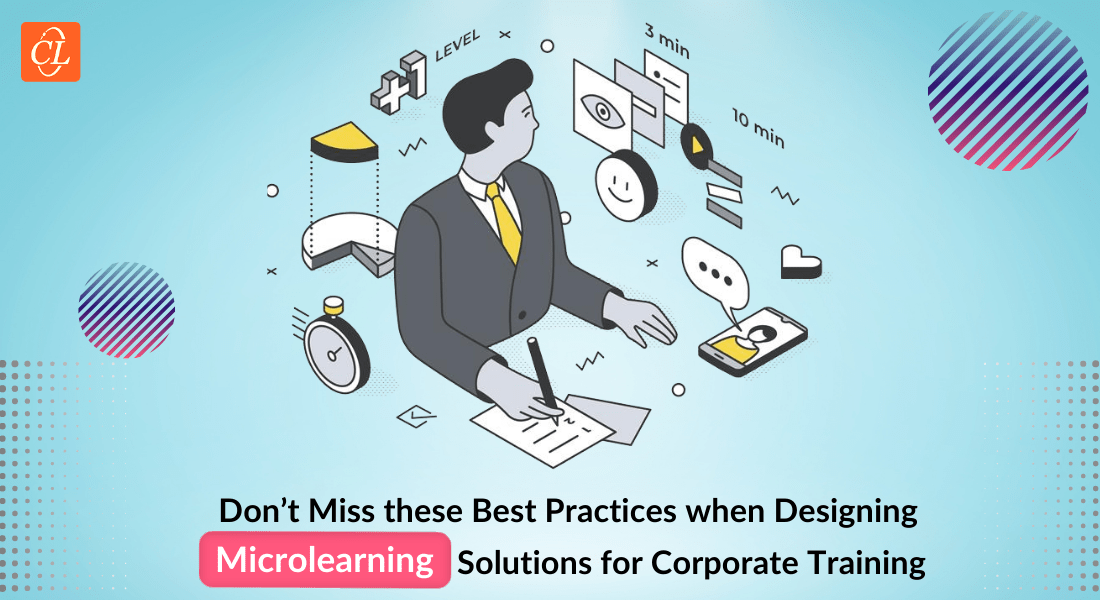Incorporating Adult Learning Principles in eLearning

It’s a well-established fact that adults learn differently than children. But why is this so, and how does that affect the effectiveness of your corporate training efforts? Adults do not learn in the same way or at the same rate as children. Children are motivated by curiosity, while adults are motivated by utility; adults are usually looking for solutions to their immediate challenges when they learn, whereas children absorb everything as a new learning experience; children require supervision, while adults dislike being micromanaged.
Take your corporate training to the next level – explore how!
Andragogy is the term used to describe the process of adult learning. Andragogy focuses on adult learners’ experiences, learning requirements, and goals. It may be used to assist eLearning professionals to create more meaningful learning experiences for adult learners. An eLearning course, to be effective, needs to cater to these preferences of adult learners, such as course relevancy, free navigation, etc.
Five ‘Adult Learning Principles’ were developed by American educator Malcolm Knowles based on the characteristics of adult learners. Let’s now go through them and look at how to incorporate them in eLearning for impactful and efficient learning.
Adult Learning Principles and eLearning
Tips to Get Started
- Need to know how the training will help them – Provide SMART learning objectives
- Are self-directed – Offer unrestricted navigation
- Are influenced by their experiences – Provide pre-assessments and real-world examples
Adult Learning Principles
These principles are very important to make your eLearning courses learner-centric and appealing to your adult corporate learners. Here they are:
- Adult learners do not learn everything that is presented to them; they need to understand why they should learn anything, and how the training will help them. They will only learn if they believe the time and effort they will expend on learning will be worthwhile.
- Unlike children, who require direction, adults prefer to lead their own learning experience by learning in their own way and at their own pace. They have a strong desire to be self-directed.
- Adults, unlike children, are not “blank slates”; they have a plethora of knowledge, skills, experience, beliefs, and values. They assimilate new information into their existing knowledge.
- Unlike children, who learn just for the joy of learning something new, adults will only be interested in learning if they feel it will help them perform their jobs better or solve a problem at their workplace.
- Adults are motivated by both extrinsic (pay increases, promotions, etc.) and intrinsic (increased self-esteem, confidence, sense of achievement, etc.) rewards.
How to Incorporate Adult Learning Principles in eLearning
1. The “Why” of learning is crucial for adults.
To fully engage learners, the relevance of the training programme should be emphasized. Adults need to know the objective or goal of the training to be motivated to learn, and to improve their performance. They need to know the ‘What’s in It for Me (WIIFM)’ before they get invested in the training.
One effective method of incorporating this principle in the eLearning is to provide SMART (specific, measurable, achievable, relevant, and timely) performance-based learning objectives that inform learners about what they will be able to do after completing the course.
2. Adults have a need to be self-directed and autonomous.
Adults prefer self-directed learning because it allows them to learn at their pace, prioritize and take command of their learning. To design effective eLearning, you need to involve your learners in the learning process. Adults favour self-directed learning because it allows them to take command of their learning, allows them to learn at their personal pace, and allows them to prioritize their learning. Put yourselves in the learner’s shoes and understand how frustrating it can be to be told at each step what you should do and where you should go. Adult learning is most effective when it is self-directed rather than imposed.
So, how do we offer learners the freedom to be self-directing? Simple. Provide:
- An easy-to-use graphical user interface (GUI)
- Unrestricted navigation, where the learner is free to go to any topic in the course, in any order he prefers
3. Adults build on their existing knowledge when they learn.
Adult learners tend to try to make connections between their prior knowledge (from past learning or experiences) and the present learning. They analyze, rationalize, synthesize, and produce new ideas or modify old ones via the prism of their experiences. This helps them establish connections, recognize relevance, and find inspiration. You may incorporate this principle in eLearning through:
- Pre-assessments
- Real world examples
- Icebreakers
- Rhetorical questions
4. Adults enter a learning experience with a problem-centred orientation.
Adults have a default ‘problem-solving approach’ to everything, and learning is no exception. Their learning is driven by a desire to address job-related challenges more than anything else, and this can be accomplished when they link the problem with the information they can get through training. You need to design eLearning to be task-oriented and focused on practical applications that will help them solve problems on the job.
So, present your learners with problems that they will be motivated to solve through:
- Scenarios/simulations
- Asking questions, making them reflect and think to arrive at a solution
- Links to practice exercises or additional resources
Harness the power of imagination. Try scenario-based eLearning.
5. Adults are motivated to learn by both intrinsic and extrinsic motivators.
Adults learn for their own reasons, such as career growth or improved self-esteem. Furthermore, friendly competition among peers and the joy of success are usually the most effective motivators for learners. Including game elements in training helps to motivate your adult learners greatly:
- Certificates
- Leaderboards
- Scores and Levels
Another effective way to motivate adult learners is to challenge them regularly and provide constructive feedback that makes them feel appreciated.
Parting Thoughts
So, now that you know all these adult learning secrets, what’s next? Have you started putting them into practice yet? Gain more insights into adult learning principles, the learning cycle, how they help ensure successful eLearning implementation, and more in this comprehensive guide.





